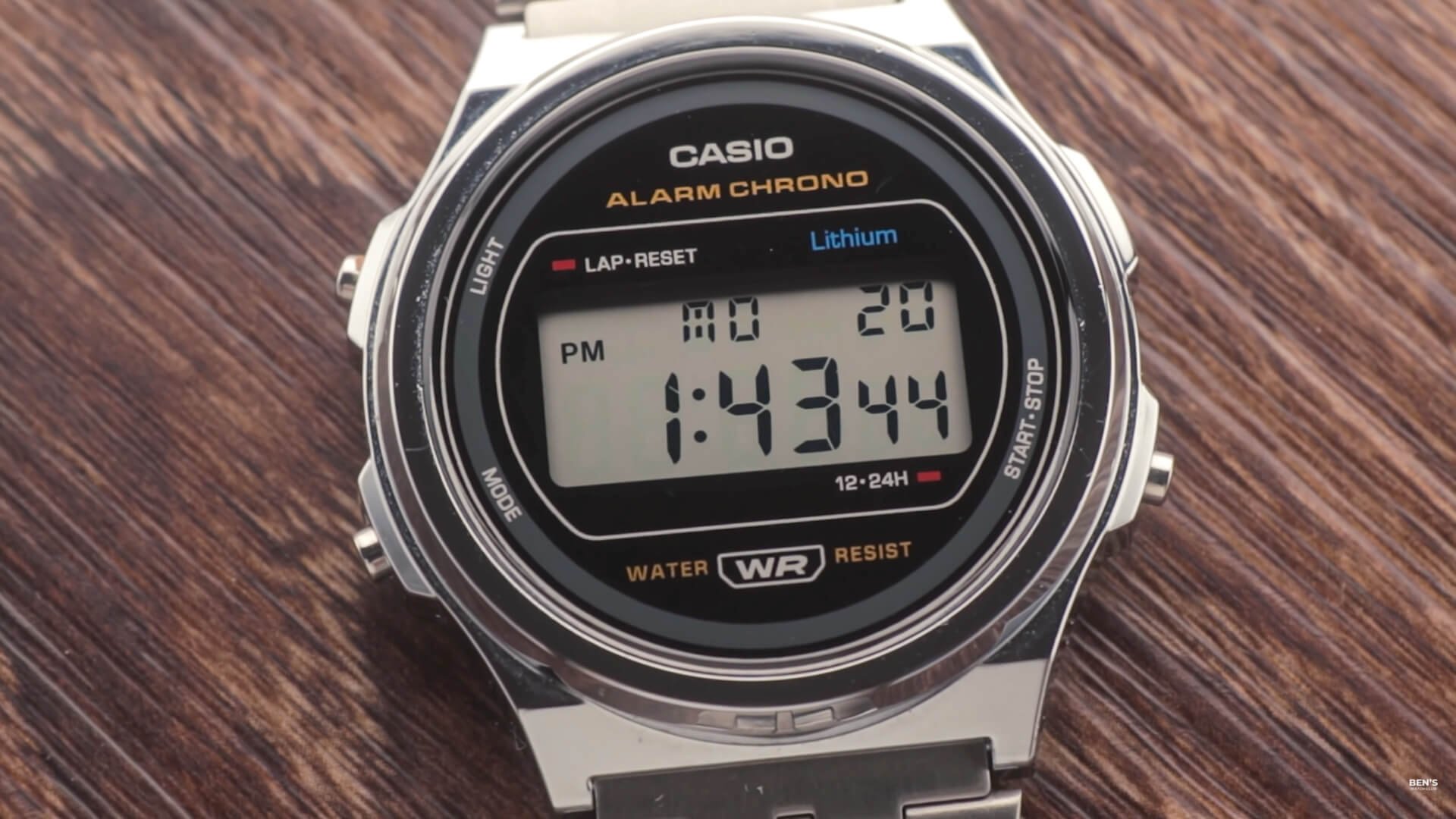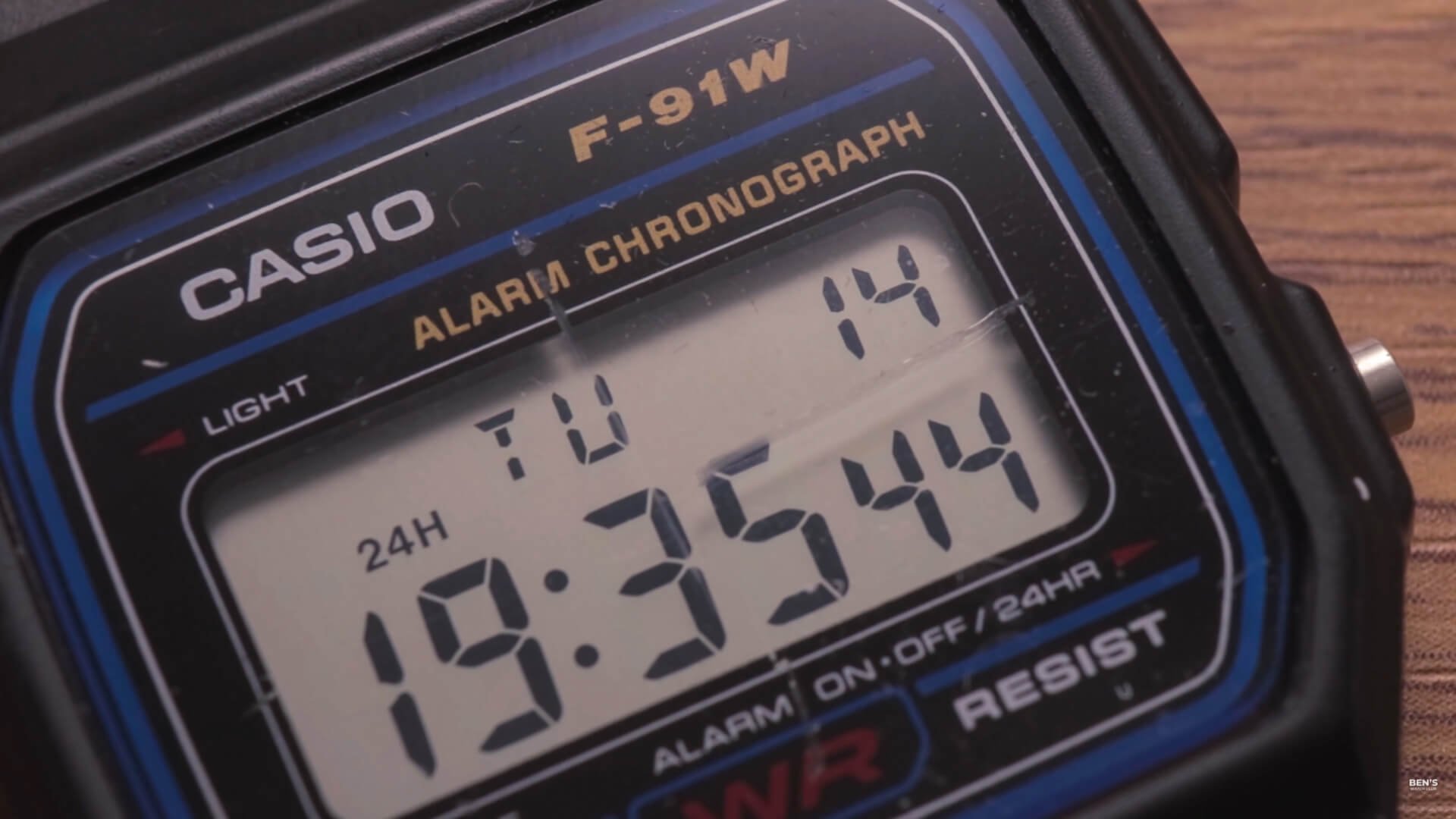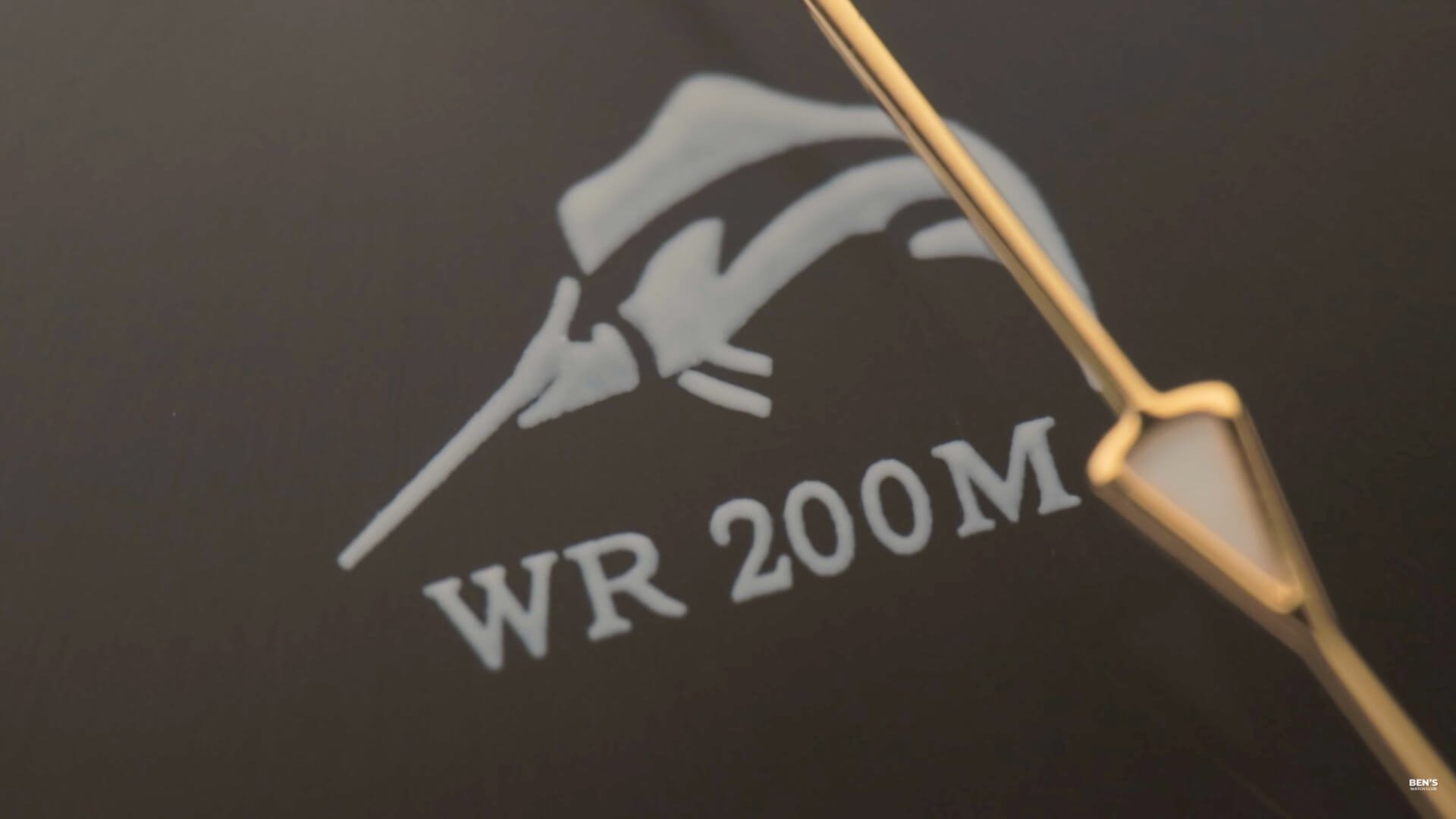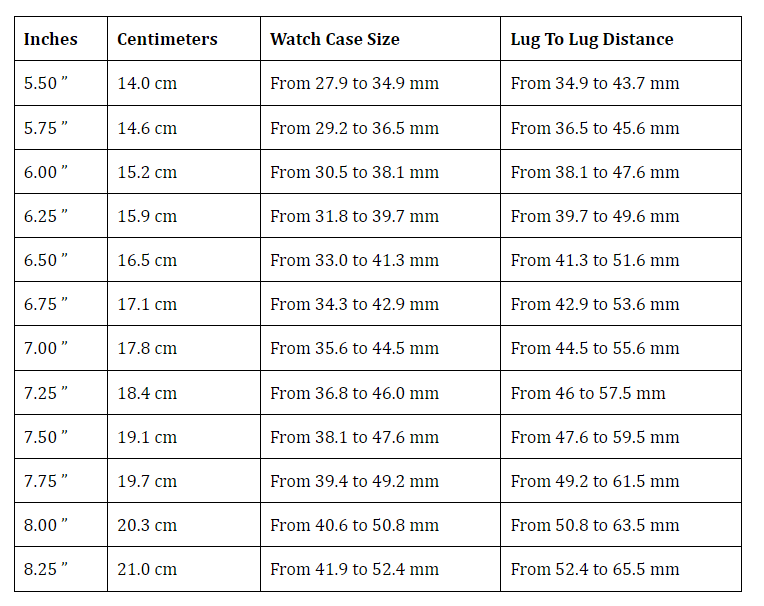A Beginners Guide To Buying An Affordable Watch
(This page features affiliate links, for more information click here.)
Ok, so you're thinking about buying a watch?
Perhaps for you or as a gift for somebody else? Nice move. However, as you've probably discovered, choosing which one to buy can be trickier than expected. There are all these sizes, styles, materials, and brands… it's difficult to know where to start.
Well, you're in the right place!
In this post, I'll go through everything you need to know before buying a watch as quickly as possible to help you make a better purchasing decision. After all, you don't want to end up with a piece of garbage, right?
To be clear, we aren't covering smartwatches here, just the classic ones.
Let's begin with arguably the most crucial factor, the movement.
Movements
The movement is the mechanism that powers the watch. The engine or 'heart' of the watch. There are three types worth knowing about:
• Quartz
• Mechanical
• Automatic
99% of wristwatches will feature one of these three movements or a variant of them.
Quartz
Quartz movements are the most common among entry-level watches. These are mini electrical circuits powered by a battery, and as the name suggests, they house a tiny piece of quartz. This crystal vibrates at an incredibly high rate when a current is passed through it; other parts of the movement convert this vibration into a single pulse per second. You'll notice that the second hand on analog quartz watches tick once every second for this very reason. Neat, eh?
The quartz movement contained within a Filippo Loreti watch.
A Casio A171 with it’s digital display
Digital and solar pieces rely on modified versions of this same technology and essentially have the same pros and cons. Quartz movements are more accurate than mechanical ones, despite costing far less to produce on average. They also require less maintenance due to the lack of moving parts and will keep ticking until the battery eventually runs out of power, at which point it can simply be changed. Therefore, quartz watches are a good choice for those in manual jobs, where the watch may be susceptible to impacts or where accurate time is a necessity.
In some instances, the ticking noise of a quartz movement can be audible, and the second hands are known to often miss the markers due to misalignment, both of which can be a little annoying.
Mechanical
What are mechanical watches? This is how all watches used to be made, using a complex arrangement of gears and springs. The term 'mechanical movement' is more of an umbrella term that incorporates any watch that uses a clockwork mechanism to tell the time. Mechanical movements rely on you, the user, to provide the power for the watch (as this technology pre-dates cheap consumer batteries).
Hand-wind Movement
When you see the 'mechanical' on product listings, it typically refers to 'hand-wound' mechanical movements. These require the user to manually wind the watch by rotating the crown several times. This action tightens the mainspring. This mainspring gradually unwinds over time, transferring its accumulated energy through gears to the rest of the parts. The watch will keep telling the time until the mainspring has fully unwound. Different movements last for specified durations between winding; this is the 'power reserve' number that you've probably seen on some product pages. A watch that has stopped and fully depleted its power reserve will just need winding and the time resetting to start operating again.
The innards of the Hamilton Khaki Field Mechanical
The spec sheet of a watch, showcasing the power reserve, on Jomashop
Automatic watches alleviate this shortcoming.
Automatic Movement
Automatic movements are a more modern type of mechanical movement that feature additional rotating-weight mechanisms, allowing the watch to be wound using the natural motion of your wrist throughout the day. Many automatic movements still enable you to hand-wind the movement should you see fit. Still, for the most part, the convenient self-winding rotor eliminates the need for this, so long as the watch is worn regularly.
The exhibition windows (and movements) of the Seiko SNK805 and Seiko SNZG09
What type of movement should you buy then?
If you or the recipient would like something practical and low maintenance, quartz watches are the way to go. Some of these also come with additional functionality that could be useful depending on your use case. They're no-fuss but, for the most part, also no-frills.
If you're after something that looks and feels classier, like a watch for special occasions or as a reward, then it's probably worth considering some sort of mechanical offering. Automatic watches, in particular, are a good gateway, as they don't require any fiddly bits to work, and the user can continually charge the watch as they wear it.
Both mechanical options offer sweeping actions, where the second-hand glides along, rather than juddering once per second. This is far more visually pleasing, and together with the increased weight, it gives the impression of a higher quality product. You can sometimes get these smooth motions in quartz watches, but they are rare, to say the least.
The domed crystal and dial of the automatic Orient Star Classic
The thin side profile of the mechanical Hamilton Khaki Field
While impractical, hand-wound movements are usually slimmer than automatics, given the fewer parts, resulting in a quartz-like slimness that is difficult to obtain via automatic means.
If you (or the intended recipient) rely on a smartphone to tell the time and the watch would be relegated to a solely aesthetic purpose, some type of mechanical watch is arguably the better choice. The smooth sweep looks much more graceful and stylish.
Due to the intricacy of the production process, mechanical watches will generally cost you more than comparatively-specced quartz pieces, but we'll discuss pricing in depth later.
Materials
Before then, we need to mention the materials. What are watches made of? There are two main components: the case and the crystal.
The case is the main housing of the watch and is usually constructed of metal, while the crystal is the transparent glass-like substance over the dial. The worse these parts are, the more susceptible the watch is to being damaged.
Lower-end watch cases are often made of either resin (aka plastic), brass, or zinc alloy. Resin watches, like many Casios or G-Shocks, are very light and stand up well to impacts but do scratch relatively easily.
Scratches on the acrylic crystal of a Casio F-91W
Light scuffs on the steel case of a Lorus automatic
Chromed brass and non-steel alloys are sometimes used as cheaper alternatives to stainless steel. These metals offer increased weight versus plastic, giving the impression of higher quality, but aren't as rugged or durable as steel. Any chrome plating will ultimately wear away or crack over time, meaning these watches aren't particularly future-proofed. I'd personally avoid these and opt for either resin or steel if possible.
316L stainless steel is the industry standard above the $50 mark at the time of writing. This metal offers good corrosion resistance and is more durable, though it will still accrue some scratches over its lifespan. Some brands ram this down your throat as if it's an exclusive miracle metal, and while it is decent, it's far from a unique feature worth fawning over.
The steel-cased Seiko 5 SNKL45
MVMT overhyping an industry-standard material on Instagram
Other stainless steel grades in wristwatches include the inferior 304L and the Rolex-preferred 904L.
Rarer, exotic materials include ceramic, bronze, and a personal favorite of mine, titanium, which offers super-lightweight performance. Steel is what you're most likely to see at retailers.
Glass
There are 3 main types of crystal or glass. That being acrylic, mineral, and sapphire.
The domed acrylic on the Junkers Bauhaus 100 Year Anniversary Edition
Acrylic, aka hesalite or plexiglass, is just domed plastic. This type of crystal scratches very easily and is the cheapest to produce. Some brands opt for this as it's more malleable and can be heavily domed at a low cost, and it's also shatter-resistant.
Light scratches on a mineral crystal
Mineral glass is next up the chain and is comparable to the glass in your windows. This copes with scratches a little better but isn't top-tier. Some brands offer hardened versions of this under a variety of brand names. If it's not directly labeled acrylic, mineral, or sapphire, it's probably a hardened mineral crystal with gimmicky branding.
No scratches visible on a sapphire crystal
Sapphire is generally considered the most desirable crystal in watchmaking. It's the most expensive to produce but gives by far the best scratch resistance, only able to be damaged by diamonds or huge impacts that may shatter it.
There are also raised or domed versions of all of these three crystals out there. These don't offer any tangible performance benefits and are simply an aesthetic choice. In most cases, the more scratch resistance you can obtain, the better. If you want a more in-depth look into the main types of glass, check out my watch crystal guide here.
Water Resistance
Another metric to keep an eye on is water resistance. This is a measure of how well-sealed the watch is against water and is usually displayed in one of three ways - ATM, bar, or meters. These are all different pressure units, but they're pretty simple to understand.
1 bar is approximately equivalent to 1ATM and 10 meters, respectively. So, a 5bar rating would be roughly the same as 5ATM or 50m, and a 10bar rating would be equivalent to 10ATM or 100m.
As you can guess, the higher the designation, the better the watch is at keeping water out. These ratings are calculated with static pressure leakage tests in controlled environments straight out of the factory and therefore aren't wholly representative of real-world use. Take a 3ATM watch, for example. On paper, you'd think that 30m of water resistance would be more than enough for swimming. In reality, the rapidly changing water pressure and dynamic stresses during motion would quickly result in water penetrating the innards. Therefore, here's what you need to know.
Water pouring onto the water-resistant Invicta Pro Diver Automatic
The water resistance rating of a Casio Duro MDV-106
If you or the recipient wants to go swimming, your best bet is to opt for a watch with a minimum of 10bar or 10 Atm or 100m of water resistance. This is a sweet spot that should keep you covered. Anything under that is essentially splash resistant and may be temporarily submergible but shouldn't be exposed to water for extended durations. This doesn't matter much if it's a dress watch that won't see any aquatic action.
Please be aware that many random Chinese brands are stamping all sorts of water resistance claims on their watches, likely without having these ratings vetted by the ISO. If you really intend on scuba diving, I'd avoid any brand that isn't well-known in the industry.
Finishing & Quality Control
Unfortunately, specs only tell half of the story. You see, it's not that hard to inexpensively cram a bunch of tick list components into a watch. Such a strategy would look great on paper but would result in a piece that still looks incredibly cheap. That's where finishing comes in. This is the fit and finish of the watch, including how precisely any brushing or polishing has been executed and how much craftsmanship has gone into the finer details.
A poorly finished Tommy Hilfiger watch with fixed end links
A barebones fashion watch from Primark
Low-quality watches tend to have generic markers and hands with basic shapes; they will usually look rudimentary upon closer inspection. Their cases, for example, typically feature a single type of finishing with a basic structure that's easy to mass-produce.
Higher-quality watches will be done to a better standard that involves more time and effort on specific parts of the watch rather than relying on a load of off-the-shelf components. This can mean proper custom shapes and features, varying textures across surfaces, and neater inking of text and logos. There is, of course, more nuance to it the higher up the chain you go, but I don't want to stretch this post unnecessarily.
The impressively detailed, yet affordable, Seiko SNKL23
Applied marker on the RLG Odyssea
Without the experience of handling multiple watches, such factors can be tricky to judge, so it might be worth comparing several options in the flesh and keeping an eye out for any quality control issues, which can be more obvious. Such problems are plentiful on rubbish watches and can include misaligned markers, hands, and text, as well as dirt and dust underneath the crystal.
Size
Of course, a watch may perform well underwater, but what if it looks ghastly on the wrist? Well, there will always be an element of subjectivity to sizing. Technically, you can wear whatever you want, regardless of whether it is proportionate. Nevertheless, here are some tips for those after a watch that visually suits their wrist size or the recipient.
There are two critical measurements. The main one you'll notice on product listings is case diameter. This measures the width of the watch, not including the crown that juts out of the side.
Diameter of the Depth Charge Diver
Lug to lug of the Depth Charge Diver
More importantly, and often absent from these pages, is lug to lug size. This is the measurement from one set of lugs (the area that sticks out holding one end of the strap) to those on the opposite side. When the watch is on the wrist, this measurement will determine whether it lies correctly or overhangs the edges of your arm.
If the watch is for you, there's a helpful chart on theslenderwrist.com, which I'll put below.
Photo Credit: The Ultimate Watch Size Guide - theslenderwrist.com
If the watch is for someone else and you can't measure their wrist size without giving the game away, here's my advice. Watches marketed towards females tend to come in at 36mm or less, which is a suitable size due to their inherently smaller build. Ladies tend to pull off oversized stuff better than guys anyway, so the next bit will be sizing for men exclusively, given that's what I'm familiar with.
If the recipient is a skinny guy, aim for something between 35 and 39mm in diameter, with a sub-48mm lug to lug. If they appear to have a fairly standard size wrist, opt for something between 37mm to 42mm in diameter and 42 to 52mm lug to lug size. If they have thicker arms, go for something with a diameter of 41mm to 45mm, and a lug to lug of 45mm to 58mm. If they're a true giant and would appreciate something flashy, then you could always go bigger still.
Thickness is also another metric you might be wondering about. This is of lesser importance, as even my super-thin wrist can even take some pretty chunky watches, provided that the previous two measurements are well-tailored. Watches with domed crystals are often given a thickness stat that includes the glass height, so in reality, they tend to wear a bit thinner when on-wrist.
A Vostok Amphibia dive watch on-wrist
Thickness of a Vostok Amphibia on-wrist
The biggest mistake I usually see is men wearing watches that proportionately look too large. Therefore, if you're torn between two watches of differing sizes, I'd lean on the side of caution and opt for the smaller one. A watch rarely looks too small.
Watch Styles
You'll notice that there's an enormous variety of watches out there. If the watch is intended as a gift, you'll likely have some idea of what style they'd probably prefer, though I'll cover a few of the most popular and versatile types that should be easy pleasers.
The Casio A158W
First up, there are the retro digitals. I know these are super popular from the view counts on YouTube alone. In particular, the silver versions can be worn with just about everything, and some are surprisingly good-looking. Luckily for you, I did an entire blog post covering the best options which you can view here. These also benefit from being extremely low-cost, so it's a no-brainer if you're on a tight budget.
Alternatively, there are dive watches and chronographs. Divers are those sporty-looking models with a rotating bezel atop them. Because of the styling and durability, these have become very popular go-to's in recent years, and they're ideal for those into water sports as well.
The Seiko SNDC31 chronograph on the wrist
Chronographs, with their multiple subdials, are often considered the best-looking watches by non-watch folk, at least from my experience. I think there's a correlation between the complexity of the dial and perceived quality by non-collectors. As such, they are a consistently good gift choice. Remember that chronographs are typically larger than other types of watches, so most won't be optimal for skinny wrists.
Brands
By now, you've probably got an idea of what you're looking for, but…what brand do you choose? After all, there are thousands of companies out there.
Well, I don't have time to run through all of them in this post. Therefore, I'll instead give you some general guidelines.
First up, if the brand is being rammed down your throat by paid social media influencers, it's probably garbage. I've reviewed a bunch of them in the past. The vast majority have been overhyped and overpriced junk, relying on aggressive marketing tactics to make sales instead of quality products.
From my experience, you're better off sticking with brands that focus on watch production as the core part of their business and have a proven history in the industry.
Over the last couple of years, I've found that Japanese brands have tended to offer consistently good bang-for-buck products, so it might be worth scouting them out as a safe starting point. This includes the likes of Casio, Seiko, Orient, Citizen, and their subsidiaries.
Where to Buy
As always, I'd stick to well-known websites and avoid dodgy-looking listings that seem too good to be true. Obviously, a plethora of fakes inhabits the likes of wish.com. Avoid that site at all costs unless you fancy scamming yourself or a loved one. If you're planning on spending a significant amount of money on a luxury watch, most commenters recommend opting for an authorized dealer so you can access a manufacturer's warranty. You can save a bunch of money on grey market sites like Jomashop, where you get a warranty from the retailer instead, which works well on more affordable watches.
Buying used pieces on sites like eBay or forums can be risky if you're unsure of what you're looking for, so I'd recommend against it for beginners.
Something else to note is that some websites prefer to use renderings in their product listings. These computer-generated mockups can look quite different from the watch in person, so I'd undoubtedly track down video footage of the watch first. Many often look better while others can look much, much worse.
The Seiko SNK361 looks better in real life (right) than in the stock images (left)
The MVMT Classic looks better in the stock images (left) than in real life (right)
Cost
So, the big question. How much do you need to spend to get a good watch? Ha…good one! No seriously, this is always going to be a highly debated topic. It's like asking how much you need to spend to get a good car, a fast computer, or tasty pizza. A lot depends on your preferences.
I will attempt to address this by recommending the average price of a watch that's probably enough to please most people, provided that you've taken on board the previous points in this post.
I'd stick to some sort of resin Casio if you're on a tight budget. Lorus also makes an excellent super-budget field watch if you can find it for a similar price.
Outside of those, if you want to play it safe, I'd probably recommend spending no less than about £60 on a steel quartz watch and about £100 on an automatic if you're in the UK. The real sweet spot is the $200-$300 range if you can stretch that far, after which point you begin to get diminishing returns. I think most recipients would be very impressed with a $250 watch if you chose wisely.
The RLG Odyssea, which currently retails for around $429 (use promo code BWC21 for $30 off)
From my experience, when you start going past the $1000 mark, you're primarily paying for branding and prestige rather than a notable increase in build quality. You need a microscope to see the finer details, which most people aren't carrying in their back pocket. The US generally has lower prices than Europe and other developed nations. You can convert the price points I just mentioned and increase them by around 10% to get a more accurate figure if you live outside of the states.
Remember that price is just one of many factors to consider. A prime example of a brand charging high fees for bottom-of-the-barrel products is Tayroc, and you can read my review of that brand right here.
































